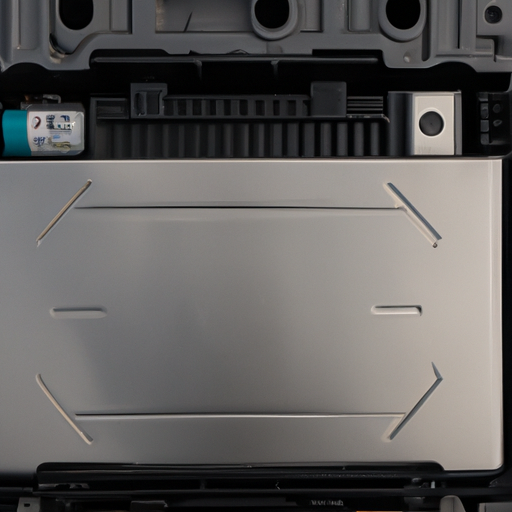Have you ever wondered if electric vehicles (EVs) lose range over time? It’s a common concern for potential EV owners, but let’s put those worries to rest. In this article, we’ll explore the longevity of EV batteries and uncover whether or not they truly lose range over time. So, whether you’re considering making the switch to an electric vehicle or simply curious about the technology, read on to discover the truth behind EV range depreciation.
Factors That Affect EV Range
Battery Capacity
One of the primary factors that affect the range of an electric vehicle (EV) is its battery capacity. The larger the battery capacity, the longer the range the EV can achieve on a single charge. Battery capacity is typically measured in kilowatt-hours (kWh), and higher capacity batteries generally provide more range for the driver.
Driving Conditions
Driving conditions play a significant role in determining the range of an EV. For instance, city driving generally provides a higher range compared to highway driving. The constant stop-and-go traffic in cities allows for more energy regeneration through regenerative braking, thereby maximizing the range. On the other hand, highway driving at higher speeds tends to consume more energy and reduce the overall range.
Moreover, driving in hilly or mountainous terrain can also impact the range of an EV. Uphill driving requires more energy than driving on flat surfaces, resulting in a reduced range. Similarly, the use of accessories such as air conditioning or heating can also affect the range, as they draw power from the battery.
Climate
Climate is another significant factor that affects EV range. In cold weather, the range of an EV can decrease due to increased energy usage for heating both the cabin and the battery. Additionally, batteries are less efficient in low temperatures, which further reduces the overall range. Conversely, in hot weather, the range can be impacted due to increased energy consumption by the cooling system and decreased battery efficiency.
To mitigate the effects of extreme temperatures, many EVs are equipped with temperature management systems that help maintain optimal battery temperature and prolong the range. These systems can heat or cool the battery as needed to ensure optimal performance.
Vehicle Age and Usage
As an EV ages and accrues more usage, its range can be affected. General wear and tear on the vehicle can lead to decreased efficiency and, consequently, a reduced range. Additionally, the battery itself can age over time and lose some of its capacity. This battery aging can result from chemical degradation and the accumulation of cycles and is typically a gradual process.
Furthermore, high mileage on an EV can impact its range. Just like any other vehicle, an EV’s range can decrease as it accumulates miles driven. However, it’s important to note that proper maintenance and charging practices can play a crucial role in maintaining optimal range even with age and high mileage.
Charging Habits
Charging habits can also have an impact on EV range. The frequency and type of charger used can influence the overall charging efficiency, which in turn affects the range. Fast charging, while convenient, can result in higher heat generation, which can accelerate battery degradation. Charging to full capacity regularly may also contribute to battery degradation, as it puts additional stress on the battery. On the other hand, charging to partial capacity and utilizing smart charging algorithms can help preserve the battery health and, subsequently, maintain the range.
Battery Capacity and Degradation
Understanding Battery Capacity
Battery capacity refers to the amount of energy an EV battery can store and deliver. It is typically measured in kilowatt-hours (kWh). The higher the battery capacity, the longer the range an EV can achieve. Battery capacity is an essential factor to consider when purchasing an EV, as it directly affects the driving range.
Factors Contributing to Battery Degradation
Battery degradation is an inevitable process that occurs over time and leads to a decrease in battery capacity. Several factors contribute to battery degradation, including the number of charge cycles, the charging speed, temperature extremes, and depth of discharge.
Frequent deep discharges and high charging speeds can accelerate the chemical reactions within the battery, leading to quicker degradation. Similarly, exposure to extreme temperatures, both hot and cold, can negatively impact battery health. Consistently operating the battery at high or low states of charge can also contribute to degradation.
Battery Lifespan
The lifespan of an EV battery refers to its usable life before it no longer provides sufficient range for daily driving. Battery lifespan can vary depending on numerous factors, including the battery technology, charging practices, and overall usage.
On average, modern EV batteries are designed to last 8-12 years or more. However, it’s important to note that battery lifespan is not the same as battery warranty, which is typically shorter. Proper maintenance, charging within optimal ranges, and avoiding extreme temperature exposure can help extend the battery’s lifespan and maintain range.
Effect of Battery Degradation on Range
As an EV battery degrades over time, its capacity diminishes. This reduction in capacity directly affects the range of the vehicle. For example, if a battery has degraded by 20%, the range of the EV will also decrease by approximately 20%. It’s essential for EV owners to understand that range loss is a natural part of battery aging and to manage their expectations accordingly.
Ways to Mitigate Battery Degradation
While battery degradation is inevitable, there are several steps EV owners can take to mitigate its impact and prolong the battery’s life. First and foremost, adhering to recommended charging practices, such as avoiding deep discharges and high charging speeds, can help slow down battery degradation.
Monitoring and managing the battery’s temperature is also crucial. Avoiding extreme temperature exposure, both hot and cold, can help preserve the battery’s health and maintain optimal range. Additionally, periodically performing battery health diagnostics and seeking professional evaluations can provide valuable insights into the battery’s condition and aid in identifying any potential issues early on.
Driving Conditions and Range
City vs. Highway Driving
…
